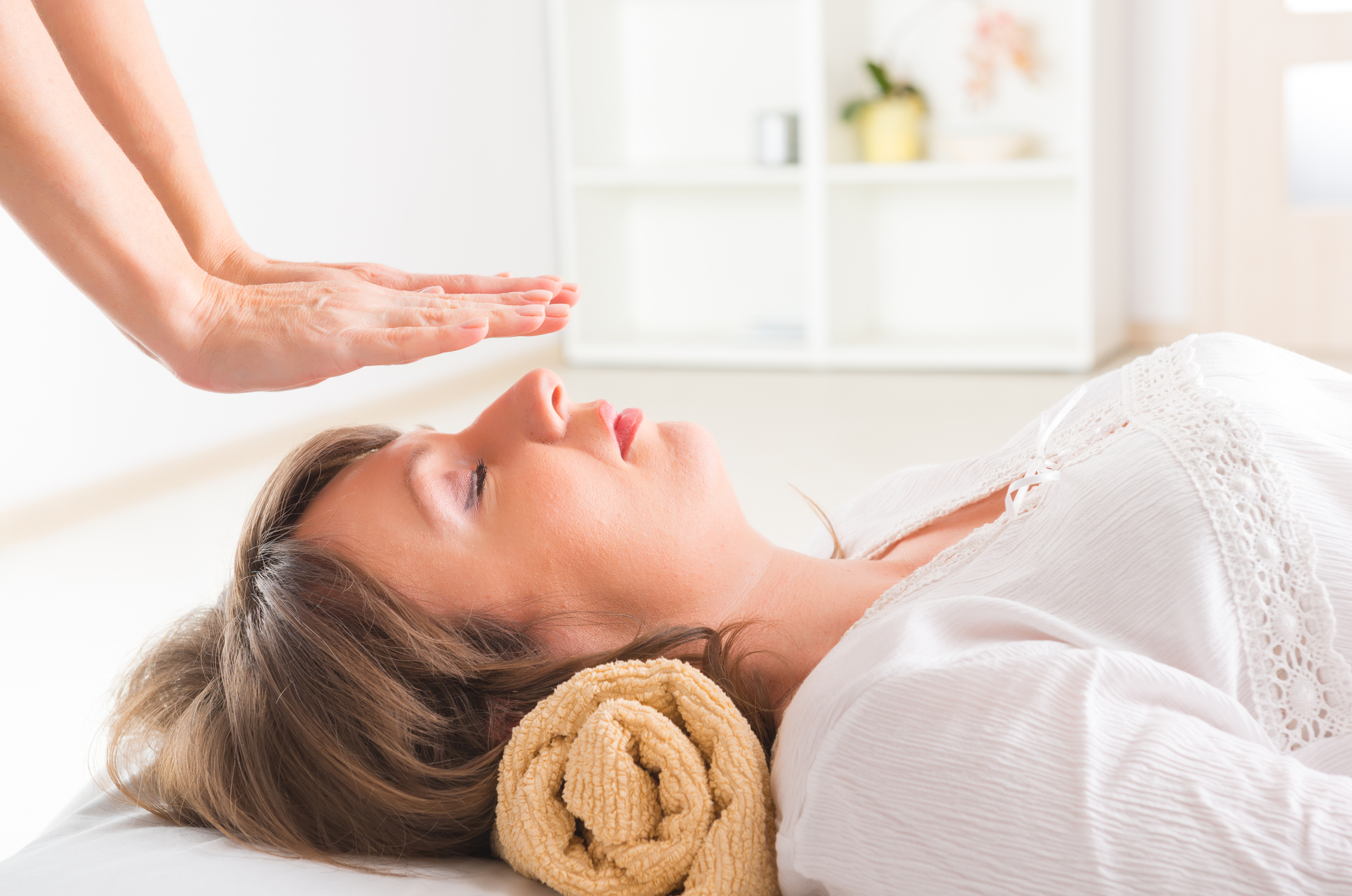What is Reiki?
Reiki pronounced ( Ray-Key) is an alternative healing practice that originated in Japan and is now practiced worldwide. The word “Reiki” comes from the Japanese words “rei” (universal life ) and “ki” (life energy). Reiki is a type of energy healing.
Energy healing targets the energy fields around the body also known as “chakras”.
According to practitioners, energy can stagnate in the body where there has been physical injury or possibly emotional pain. In time, these energy blocks can cause illness.
Energy healing targets the flow of energy and removes blocks in a similar way to acupuncture or acupressure. Improving the flow of energy in and around the body, say practitioners, can enable relaxation, reduce pain, speed healing, and reduce other symptoms of illness.
Reiki has been around for thousands of years. Its current form was first developed in 1922 by a Japanese Buddhist called Mikao Usui, who reportedly taught 2,000 people the Reiki method during his lifetime. His tradition and methods were passed through several grandmasters of Reiki. Today, Reiki takes many forms, however, the Usui System of Natural Healing is still the form most widely practiced. The practice spread to the U.S. through Hawaii in the 1940s, and then to Europe in the 1980s.
It is commonly referred to as palm healing or hands-on healing.
What Happens in a Reiki Session
Reiki sessions typically happen in person although reiki can be done remotely. The receiver of the reiki wears comfortable clothing while the reiki practitioner(s) hovers their hands above the recipient’s body or places their hands lightly on an area of attention.
The practitioner places their hands lightly on or over specific areas of the head, limbs, and torso using different hand shapes, for between 2 and 5 minutes. The hands can be placed over 20 different areas of the body.
If there is a particular injury, such as a burn, the hands may be held just above the wound.
While the practitioner holds their hands lightly on or over the body, the transfer of energy takes place. During this time, the practitioner’s hands may be warm and tingling. Each hand position is held until the practitioner senses that the energy has stopped flowing.
When the practitioner feels that the heat, or energy, in their hands has abated, they will remove their hands and may place them over a different area of the body.
Health Benefits of Reiki
According to practitioners, the healing effects are mediated by channeling the universal energy known as qi, pronounced “chi.” In India, this is known as “prana.” This is the same energy involved in tai chi exercise. It is the life force energy that some believe surrounds all of us.
This energy is said to permeate the body. Reiki experts point out that, while this energy is not measurable by modern scientific techniques, it can be felt by many who tune in to it.
Reiki recipients report feelings of increased relaxation. Reiki assists in the body’s natural healing processes, and provides feelings of emotional, mental, and spiritual well-being.
Reiki has also been shown to be effective in reducing anxiety in recipients. In a recent study of breast cancer patients anxiety was significantly reduced after Reiki treatment. Recipients expressed feelings of relaxation throughout the 30-minute treatment, often using the words “peaceful” and “calm.” Participants expressed having paradoxical feelings during the treatment, such as heaviness and weightlessness or sinking and floating, and sometimes experiencing opposite qualities simultaneously. Furthermore, participants described their Reiki treatments as a “pleasant” experience providing them with a sense of calm and peacefulness.
While research continues to be done as to the efficacy of Reiki, many major medical centers offer reiki as a complementary therapy for cancer treatments for its anxiety reduction capabilities.
Reiki is now one of the top three complementary in-patient therapies in U.S. hospitals, according to an AHA survey. Massage therapy takes first place, with 37% of hospital patients requesting it. Number two is music and art therapy at 25%, and a very close third is “healing touch therapies” at 25%, which included Reiki and Therapeutic Touch.
Hospitals are responding, discovering for themselves the many benefits Reiki can offer. “As our healthcare system challenges institutions to offer high-quality but cost-effective service, Reiki is being recognized as an important tool to maximize patient care and minimize recovery time,” according to Libby Barnett and Maggie Babb, co-authors of Reiki Energy Medicine: Bringing Healing Touch into Home, Hospital and Hospice.
What Reiki Provides
Some of the benefits of reiki are:
- Overall sense of Peace
- Boosts immune system
- Promotes Quality of Sleep
- Reduces Anxiety and Stress
- Overall Feeling of Calm
- Balances Mind, Body and Spirit
Chandler Hall is pleased to offer part two of our three part wellness series, The Healing Power of Complementary Medicine. In this second session we will cover the complementary modality of Reiki. The sessions are free of charge but advanced registration is required so that we may provide the log in information.
Register for our free upcoming event to Learn More about Reiki
Chandler Hall is pleased to offer part two of our three part wellness series, The Healing Power of Complementary Medicine. In this second session we will cover the complementary modality of Reiki. The sessions are free of charge but advanced registration is required so that we may provide the log in information.
Reiki Master Gwynn White Walker will share her gifts and knowledge with us. Ms. White Walker holds 4 Reiki Master Certificates in Usui, Karuna and Holy Fire II disciplines of Reiki. She has been conducting reiki sessions since 2012 to all age groups including children. If you plan on attending, wear comfortable clothing as Gwynn will be providing a 5 to 10 minute guided meditation and remote reiki session!
Saturday, March 27 2021 at 10:30 am – 12:00 pm via Zoom
